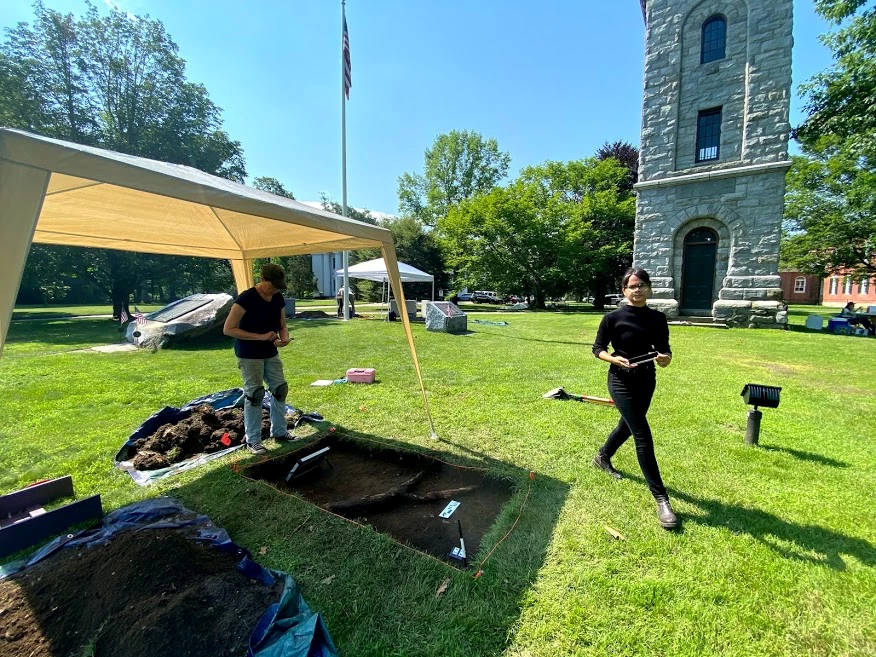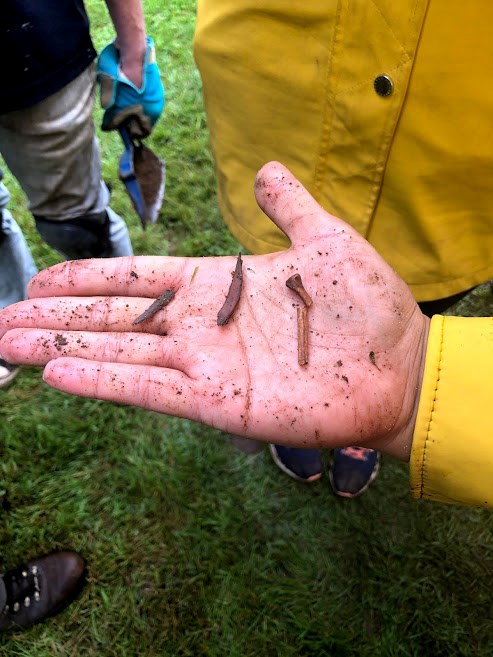Last updated: July 26, 2021
Article
Innovative Archaeology Project Focuses on Mohican Tribal Heritage

Courtesy of Bonney Hartley/ Stockbridge-Munsee Community Williamstown THPO
The projects take place at two different eighteenth-century sites in Stockbridge, Massachusetts. The first is the 1739 Stockbridge Meetinghouse a National Register Update Project. This initiative is attempting to uncover the original footprint of the building and develop materials based on the data that will help with the interpretation at this site, which is critical to understanding the cultural heritage of the Stockbridge-Munsee Community Band of Mohicans.

Courtesy of Bonney Hartley/ Stockbridge-Munsee Community Williamstown THPO
The second of the tribe’s archaeological undertakings is the 1783 Mohican Ox Roast/King Solomon Homesite Community Archaeology Project, funded by the Town of Stockbridge through the Massachusetts Community Preservation Act. This project seeks to uncover the site of a historic feast sponsored by George Washington to thank Mohican warriors for service in the Revolutionary War.
The two archaeological sites represent places that ‘bookend’ a unique 50-year period of dual governance in Stockbridge among the Mohican people and white English settlers. This occurred before the English disenfranchised and stole the Mohicans’ land.
Both archaeology projects, taking place this month and next, employ innovative, non-ground disturbing technology. Bonney Hartley, Tribal Historic Preservation Manager of the Stockbridge-Munsee Community Band of Mohicans, is working with contractors who specialize in ground penetrating radar and magnetometer equipment to uncover material without any digging.

Courtesy of Bonney Hartley/ Stockbridge-Munsee Community Williamstown THPO
According to the Stockbridge Munsee Community, “English missionaries and settlers arrived in ‘Indiantown,’ living alongside Mohicans in a Christian community centered around the Meetinghouse” in the mid-eighteenth century. “However, by the end of the century settlers had taken over lands and the governance of the town, ultimately forcing the Mohican community from their traditional homelands. The tribe relocated first to New York and then to Wisconsin, where many members now reside.” In fact, the 1785 demolition of the Meetinghouse was done to make way for a bigger space, to fit the influx of white settlers.

Courtesy of Housatonic Heritage
Upper Housatonic NHA Executive Director Dan Bolognani echoed the need for greater public education and interpretive resources for these histories, which has led to the development of the Native American Heritage Trail program and the Mohican History Walking Tour of Main Street, Stockbridge—a virtual tour that anyone enjoy by going to the website—through a partnership with the Community that began in 2015. The walking tour is featured in a new public exhibit that opened this summer at the Trustees of Reservations’ Mission House in Stockbridge.

Courtesy of Bonney Hartley/ Stockbridge-Munsee Community Williamstown THPO
“The Stockbridge-Munsee Community remains the most important voice in this program, and we are grateful for their support, input and feedback,” adds Bolognani. You can learn more about the 1736 Meetinghouse and the 1783 Ox Roast/ King Solomon Home on the Community’s fact sheet. For more background on the Stockbridge Munsee Band of Mohicans’ history and cultural affairs, visit their newly published Resource Guide.

Courtesy of Housatonic Heritage

Courtesy of Bonney Hartley/ Stockbridge-Munsee Community Williamstown THPO
